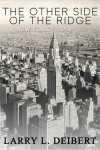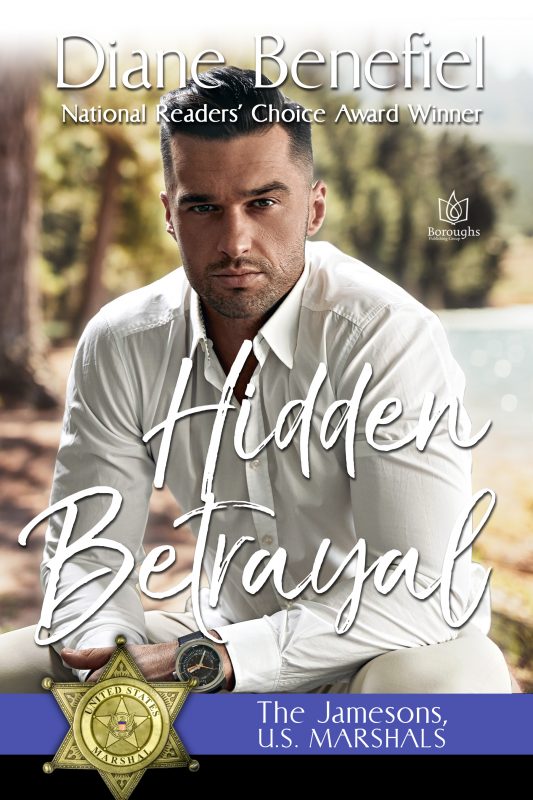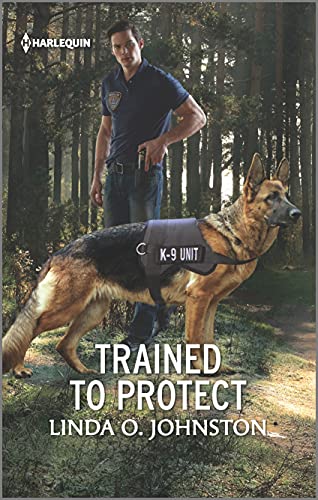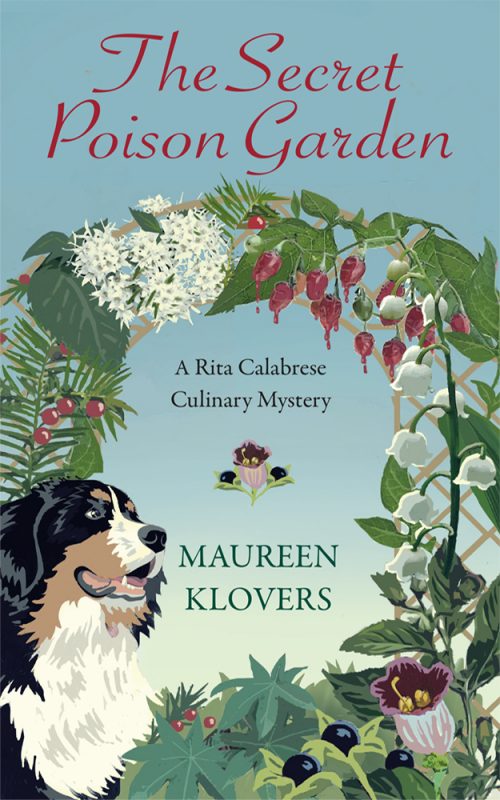A Q & A with Author Laura Drake by @JannRyan
October 2, 2017 by Jann Ryan in category Jann says . . . tagged as Harlequin Super Romance, Rodeo Romance, romance Laura Drake is a New York published author of Women’s Fiction and Romance. Her romance series, Sweet on a Cowboy, is set in the world of professional bull riding. Her debut, The Sweet Spot, won the 2014 Romance Writers of America® RITA® award. She also published a four-book small town romance series with Harlequin’s Superomance line. Her latest women’s fiction released January 2016, and she has just accepted an offer to write three more western romances for Grand Central.
Laura Drake is a New York published author of Women’s Fiction and Romance. Her romance series, Sweet on a Cowboy, is set in the world of professional bull riding. Her debut, The Sweet Spot, won the 2014 Romance Writers of America® RITA® award. She also published a four-book small town romance series with Harlequin’s Superomance line. Her latest women’s fiction released January 2016, and she has just accepted an offer to write three more western romances for Grand Central.
Laura is a city girl who never grew out of her tomboy ways, or a serious cowboy crush. In 2014, Laura realized a lifelong dream of becoming a Texan and is currently working on her accent. She gave up the corporate CFO gig to write full time. She’s a wife, grandmother, and motorcycle chick in the remaining waking hours.
Jann: Today I’m chatting with Author Laura Drake, who writes about ‘Ordinary women at the edge of extraordinary change’. Welcome Laura to A Slice of Orange.
I know you had a long road to publication. However, when you did sell your first book The Sweet Spot you won the 2014 Romance Writers of America Rita for Best First Book. What was that like?
Laura: I’m still pinching myself – it was the highlight of my life (but don’t tell my husband – he thinks he is 😉 After writing three books, and living through 417 rejections, I’d only hoped to be published. A RITA was beyond my wildest dreams! I’m embarrassed to admit how many times I’ve watched the video of that . . . it’s like a well-worn touchstone I use to prove to myself I can do it, when I’m struggling with the writing.
Jann: You also have a love for Women’s Fiction and self-published Days of Glass. Where did the idea for this book originate and share a bit of your experience self-publishing the book?

Laura: I fully intended on Glass being NY published. When I finished it, and my agent submitted it to Publishers, they all loved it, but didn’t think the market for Western Women’s Fiction was large enough to acquire it.
I didn’t care – this was the book I wrote in memory of the sister I lost to cancer, twenty-five years ago. None of the events are biographical, but the relationship between the sisters in the book is ours.
Self-publishing – The control, the technology and the learning curve – I loved every part of it!
Jann: You have a new book deal for a Western Romance Series. The first book is scheduled to release July, 2018. How exciting. What’s it about?
Laura: I’m very excited (when I’m not nauseous, thinking about the deadlines). It’s tentatively titled, Hand Me Down Dreams, and it’s the story of the perfect country girl-next-door, and what happens when her boyfriend won’t come off the rodeo road to marry her. Sounds fun, and it is, but if you’ve read any of my books, you know there’s some heavy stuff in there!
Jann: What kind of writer are you? A page a day or a burst writer?
Laura: I’m a tortoise, a workhorse, a slogger. I take my deadline, and figure out how many words I need to write a day to make it. I add a 10% ‘stuff happens’ factor, and that’s it. I write every single day. For me (and everyone’s different), it helps me stay immersed in the story. Since I’m a pantser, that’s critical.
Jann: What’s the best writing advice you ever received?
Laura: It was from our very own Char Lobb (who the Charlotte is named after, for anyone who doesn’t know). She told me after the first time she met me that I’d be one who ‘made’ it. At first, I thought she said that to everyone, because really, how could she know? I asked her about it when I knew her better, and she explained that she could see that I would keep at it, until I did. She was right. So miss that beautiful soul.
Jann: What’s the worst?
Laura: Whenever someone tells you they have THE answer. The method, the outline, the character sketch, the anything. There are as many ways to write a book as there are writers. You have to discover what works for YOU. I have a theory, that our brains already know how to do this, but they’re not talking – we all have to learn through trial and error. Try everything – but don’t listen when someone tells you what will work for you.
Jann: What sound or noise do you love?
Laura: My husband saying my name.
Jann: What sound or noise do you hate?
Laura: Voices raised in anger.
Jann: What profession other than your own would you love to attempt?
Laura: Photographer! But I cut people’s heads off in photos, so…
Jann: What profession would you hate to do?
Laura: Attorney.
For more information about Laura, here are her Links:
Jann: Thank you Laura Drake for chatting with us today. We’ll be sure to talk again next year when your new Western Romance is released. If you have any questions or comments for Laura, you may use the comment box below.
Jann Ryan

Jann Ryan grew up with the smell of orange blossoms in Orange County in sunny Southern California, where she has lived her entire life and dreamed up stories since she was a young girl. Never an avid reader, she was in her thirties when she picked up her first romance quite by accident. She fell in love with happily ever after and has been reading romances ever since.
Wanting to put pen to paper, Jann joined of Romance Writers of America®. Currently, she is working on a romantic suspense series set in Stellar Bay, a fictitious town along the California central coast to fulfill her publishing dream.
Some of Laura’s books are available below. The rest can be found here.
2 0 Read more
Creating the Perfect Environment for Your Writing by Connie Vines
November 13, 2015 by A Slice of Orange in category Archives tagged as #amwriting, #Cowboys, Amazon, BWL Ltd., Cajun Romance, Connie Vines, Kindle, OCC/RWA, Rodeo Romance, romance, romance writingDo you know what you need from your environment in order to write?
If not, it is time to find out.
Our physical surroundings are immensely important to our writing process.
Far more important than most people think.
We cannot work if we are distracted, annoyed, or constantly interrupted. We need to feel inspired and comfortable in our surroundings in order to be creative.
If your home office is cluttered with papers, laundry, and stacks of research materials, it is not the right place to write.
The mess might distract you and make you miserable, because it sends a signal about the kind of work environment you think you deserve.
It is just as bad if your office is empty. Writers work best in a creative atmosphere.
If inspiration disappears when you sit down to write you must reassess your surroundings.
Sometimes removing the clutter and reorganization of your work area will do the trick. Other times, you need a more drastic approach.
Create a Place to Thrive.
I need privacy to work on big projects like a novel. My Pandora app on my iPhone and my BOSE speaker create the perfect blend of music that centers me in my storyline. New Orleans Jazz now, but it was country and western when I was writing my rodeo romance. As a rule, I type or dictate to my computer while writing, but I keep a pen and composition book close by to make notes.
Do You Feel Inspired in Your Writing Place?
If not, what do you need to do to make your workspace inspirational?
Perhaps you are a writer who must have activity all around, all the timeР24/7. Since my day job is at a middle school, I am unable to relate to such a need. However, the library caf̩, coffee shop, or park picnic table may be your perfect writing place.
Ditch the Distractions.
Television blasting, cell phone ‘pings’, Facebook alert messages, the must ‘do list’ at the corner of your desk, all must be out of sight. I must have all other work in progress or notes on future projects in my filing cabinet. If I have my notes visible, I am excessively tempted to work on this project too.
Make Your Writing Workspace Beautiful.
Sit on a quality chair, fresh flowers (or display your roses from OCC), candles, a window, favorite mug, favorite pen. Any item that makes you spend more time in your writing space. What makes you happy?
Of course, a tailor-built writing space, or even a room dedicated as your office, is not always possible. Be creative. Find your personal writing space.
Remember the quickest way to writing success is sitting down and making it happen.
Happy Writing!
Connie Vines
 |
| Coming Soon from BWL |
Gothic Romance– Alive and Well in 2015?
October 13, 2015 by A Slice of Orange in category Archives tagged as Connie Vines, Dracula, Gothic Castles, Gothic Romance, Halloween, JaneEyre, Rodeo RomanceIs the Gothic Romantic Novel Dead?
Gothic literature has some element of horror in it, something terrifying, spooky, or horrific. It also often has mysterious elements, sometimes supernatural or dream-like qualities. These stories often take place in a spooky, dark, confined space like an ancient castle or empty manor house, a crypt, or a damp cellar. The themes of guilt and sin repeatedly appear in gothic literature, usually in reference to some crime committed or secrets kept.
Popular gothic authors include Edgar Allan Poe, Charles Brockden Brown, Mary Shelley, Ann Radcliffe, and William Beckford.
Other famous examples of Gothic literature include The Strange Case of Dr. Jekyll and Mr. Hyde and Dracula. Since the Gothic novel has branched off into numerous sub-genres, I am speaking of the Gothic in English literature ( classic texts) that created the building blocks for what we know as Gothic today.
My personal favorite (as well as Dracula) is Jane Eyre, In this example, we discover the Gothic can also refer to stories involving strange and troubling events that, while they have logical, natural explanations, seem to originate from unexpected forces. Charlotte Bronte employs this element of the Gothic in Jane Eyre, published in 1847. While living in Thornfield Hall as a governess, Jane frequently hears strange noises and laughter coming from the third story of the mansion that no one will explain, and odd things keep happening in the dead of night, such as her master Mr. Rochester’s bed catching fire, and the attack on a guest. We later discover the force behind these events is his insane wife.
Characteristics of the Gothic Novel
- Gloomy, decaying setting (haunted houses or castles with secret passages, trapdoors, and other mysterious architecture)
- Supernatural beings or monsters (ghosts, vampires, zombies, giants)
- Curses or prophecies
- Damsels in distress
- Heroes
- Romance
- Intense emotions
Today, however, there are also a ‘new’ brand of Gothic Novels. Southern Gothic is a subgenre of the gothic novel, unique to American literature.
Southern Gothic is like its parent genre in that it relies on supernatural, ironic, or unusual events to guide the plot. It is unlike its parent genre in that it uses these tools not solely for the sake of suspense, but also to explore social issues and reveal the cultural character of the American South.
The Wilderness Gothic, Suburban Gothic, Space Gothic, and Fantasy Gothic sub genres are also finding a place under the umbrella of 21st century Gothic stories, novels and novellas .
As a long time member of OCC/RWA, I am published in contemporary romance, romantic suspense, and YA historical sweet romance. However, I am also the president of RWA Gothic Chapter (GothRom) of Romance Writers.
If you’d like to learn more about this romantic genre please visit one or more of these links:
http://www.bbc.co.uk/timelines/zyp72hv A time line and more information about Gothic Literature via BBC.
https://en.wikipedia.org/wiki/Gothic_fiction
Thank you for stopping by to visit my blog post here At “A Slice of Orange“.
Connie Vines
To learn more about writing a Gothic Romance (the perfect October blog topic), please visit the GothRom Chapter of RWA.
 |
| http://gothrom.net |
The Power of Emotion by Connie Vines
August 13, 2015 by A Slice of Orange in category Archives tagged as A Slice of Orange, Cajun Romance, Connie Vines, Emotion, H.O.L.T. Medallion, Native American Romance, Rodeo Romance, Writing Emotion|
synonyms:
|
|
synonyms:
|
|
Blog.
Please stop by next month.
 |
| Fall Release: BWL, Ltd. |
 |
| Novella, BWL, Ltd., current release |
Affiliate Links
A Slice of Orange is an affiliate with some of the booksellers listed on this website, including Barnes & Nobel, Books A Million, iBooks, Kobo, and Smashwords. This means A Slice of Orange may earn a small advertising fee from sales made through the links used on this website. There are reminders of these affiliate links on the pages for individual books.
Search A Slice of Orange
Find a Column
Archives
Featured Books
THE OTHER SIDE OF THE RIDGE, NEW YORK, 1930
Dan Rodin has once again transcended time...
More info →THE SECRET POISON GARDEN
Rita Calabrese finds her newfound journalistic zeal on a collision course with her fierce maternal instinct.
More info →Newsletter
Contributing Authors
Search A Slice of Orange
Find a Column
Archives
Authors in the Bookstore
- A. E. Decker
- A. J. Scudiere
- A.J. Sidransky
- Abby Collette
- Alanna Lucus
- Albert Marrin
- Alice Duncan
- Alina K. Field
- Alison Green Myers
- Andi Lawrencovna
- Andrew C Raiford
- Angela Pryce
- Aviva Vaughn
- Barbara Ankrum
- Bethlehem Writers Group, LLC
- Carol L. Wright
- Celeste Barclay
- Christina Alexandra
- Christopher D. Ochs
- Claire Davon
- Claire Naden
- Courtnee Turner Hoyle
- Courtney Annicchiarico
- D. Lieber
- Daniel V. Meier Jr.
- Debra Dixon
- Debra H. Goldstein
- Debra Holland
- Dee Ann Palmer
- Denise M. Colby
- Diane Benefiel
- Diane Sismour
- Dianna Sinovic
- DT Krippene
- E.B. Dawson
- Emilie Dallaire
- Emily Brightwell
- Emily PW Murphy
- Fae Rowen
- Faith L. Justice
- Frances Amati
- Geralyn Corcillo
- Glynnis Campbell
- Greg Jolley
- H. O. Charles
- Jaclyn Roché
- Jacqueline Diamond
- Janet Lynn and Will Zeilinger
- Jaya Mehta
- Jeannine Atkins
- Jeff Baird
- Jenna Barwin
- Jenne Kern
- Jennifer D. Bokal
- Jennifer Lyon
- Jerome W. McFadden
- Jill Piscitello
- Jina Bacarr
- Jo A. Hiestand
- Jodi Bogert
- Jolina Petersheim
- Jonathan Maberry
- Joy Allyson
- Judy Duarte
- Justin Murphy
- Justine Davis
- Kat Martin
- Kidd Wadsworth
- Kitty Bucholtz
- Kristy Tate
- Larry Deibert
- Larry Hamilton
- Laura Drake
- Laurie Stevens
- Leslie Knowles
- Li-Ying Lundquist
- Linda Carroll-Bradd
- Linda Lappin
- Linda McLaughlin
- Linda O. Johnston
- Lisa Preston
- Lolo Paige
- Loran Holt
- Lynette M. Burrows
- Lyssa Kay Adams
- Madeline Ash
- Margarita Engle
- Marguerite Quantaine
- Marianne H. Donley
- Mary Castillo
- Maureen Klovers
- Megan Haskell
- Melanie Waterbury
- Melisa Rivero
- Melissa Chambers
- Melodie Winawer
- Meriam Wilhelm
- Mikel J. Wilson
- Mindy Neff
- Monica McCabe
- Nancy Brashear
- Neetu Malik
- Nikki Prince
- Once Upon Anthologies
- Paula Gail Benson
- Penny Reid
- Peter J Barbour
- Priscilla Oliveras
- R. H. Kohno
- Rachel Hailey
- Ralph Hieb
- Ramcy Diek
- Ransom Stephens
- Rebecca Forster
- Renae Wrich
- Roxy Matthews
- Ryder Hunte Clancy
- Sally Paradysz
- Sheila Colón-Bagley
- Simone de Muñoz
- Sophie Barnes
- Susan Kaye Quinn
- Susan Lynn Meyer
- Susan Squires
- T. D. Fox
- Tara C. Allred
- Tara Lain
- Tari Lynn Jewett
- Terri Osburn
- Tracy Reed
- Vera Jane Cook
- Vicki Crum
- Writing Something Romantic
Affiliate Links
A Slice of Orange is an affiliate with some of the booksellers listed on this website, including Barnes & Nobel, Books A Million, iBooks, Kobo, and Smashwords. This means A Slice of Orange may earn a small advertising fee from sales made through the links used on this website. There are reminders of these affiliate links on the pages for individual books.

























































